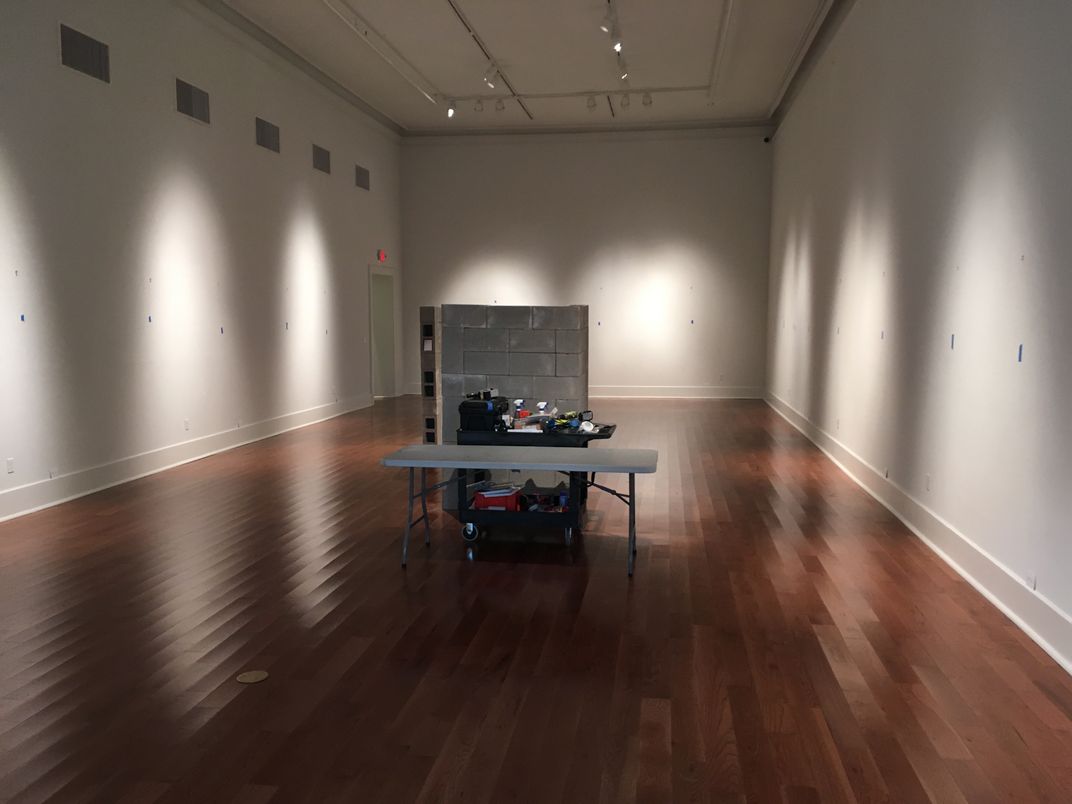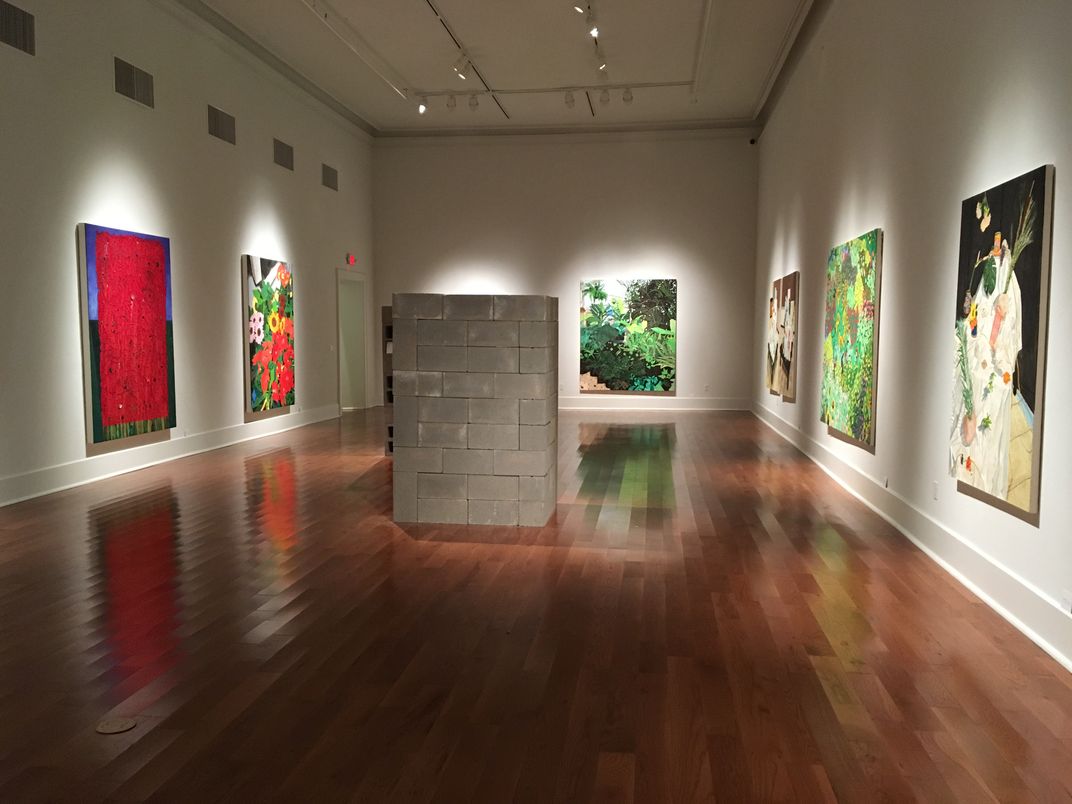This Texas Museum Was Devastated by Ike. Here’s How It Prepared For Harvey
The Galveston Arts Center sustained heavy losses when Hurricane Ike hit Texas in 2008. This time around, staff members were ready
/https://tf-cmsv2-smithsonianmag-media.s3.amazonaws.com/filer/02/56/025617b5-05ac-4bfc-a4ad-cd19f1296e7b/img_7034.jpg)
On a Wednesday afternoon, staff members at the Galveston Arts Center were in the final stages of installing an expansive exhibition that was scheduled to open on August 26. Works by three contemporary artists—Bradley Kerl, Angel Oloshove and Christopher Cascio—had been carefully displayed in three different galleries. Then the news broke: Hurricane Harvey was going to hit, and it was going to hit hard.
Fearing for the safety of the art, staff began dismantling the exhibition. They carried the works to an upper level of the building, and stored them in two different rooms: a small, cement vault and a windowless back gallery. The opening of the exhibition was pushed back to September 9. The main galleries stood empty.
Now that Texas is in the midst of the storm, it appears that Galveston has been spared the worst of Harvey’s wrath; Houston, by contrast, has been devastated by heavy rains and flooding. But last week, not knowing where the hurricane would hit, the Arts Center team decided not to leave anything up to chance.
“We are taking every precaution,” Dennis Nance, curator at the Galveston Arts Center, tells Smithsonian.com. “There's no messing around with this stuff."
Nance has good reason to be wary. Back in 2008, when Hurricane Ike pummeled Texas, the Galveston Arts Center sustained steep losses. According to Harvey Rice of the Houston Chronicle, art valued at more than $100,000 was ruined, and the storm caused upward of $1 million in damage to the historic, 19th-century bank building that houses the Arts Center.
Nance was not working for the Galveston Arts Center at the time, but he noted that the team was unable to properly prepare for the storm.
“They had a huge retrospective exhibition with large works,” he explains. “I believe the curator wasn't able to get there in time to help with the preparations, and couldn't even have done it on his own. It was just the worst possible scenario.”
It took the board members seven years to raise enough funds to restore the building and return the Galveston Arts Center to its historic home. Nance says that memories of Hurricane Ike, and the damage it caused, are still “traumatic.” So this time around, the team was prepared.
Planning for the possibility of a fierce storm began long before Harvey started fomenting in the Caribbean. Knowing that hurricane season was approaching, Nance deliberately scheduled exhibitions that would be easy to transport and store if the worst were to happen. The works that will now go on display in September include a series of paintings and small, ceramic totems.
“I was like, ‘We're going to do a couple of painting shows, not major installations in hurricane season,’” Nance says.
When news of Harvey’s impending arrival broke, Nance swung into action. He made sure that the upstairs vault was clear, and then began sorting through essential paperwork, like insurance policies and loan agreements. Next, he contacted artists whose work was on display at the Arts Center.
“The three artists with work on view all live in Houston and we all felt we could safely secure their work in our building, where it would also be covered by our fine art insurance policy,” Nance explains. “I made sure all loan agreements were in order and thoroughly documented the work on view. If we would have brought the work back to their studios [in] Houston, we would have not been able to offer the same assurances in the event of flooding in their studios. It's definitely just as much about taking care of the people we work with as much as the object they create.”
Once the art was packed away in a secure location, staff moved all gift shop merchandise that was touching the floor to an elevated space, where it would be safe from potential flooding. During the renovations after Hurricane Ike, the basement of the Arts Center was fitted with storm windows. But on the recommendation of Alex Irvine, former executive director of the Galveston Arts Center, staff members lined the rest of the building’s windows with towels.
Then, they went home to wait out the storm, hoping that the Arts Center would emerge unscathed. Thus far, it seems to be faring well.
“With the renovation of the building, we have a security system with cameras, and I can just turn my phone on and look into the gallery,” Nance says. “So Friday night when that first rain was coming in, I was just looking, and you could see the front door, and there was a little light on the table so I could tell, ‘OK, power's still working. There's no water in the building.’”
“We feel really lucky,” he adds, “and our hearts totally go our to the organizations and people who are experiencing the worst part of [Harvey].”
As heavy rains continue to fall on Houston, Nance and other members of the local arts community have been busy compiling resources for artists whose work has been damaged by flooding. Fresh Arts, a Houston-based non-profit that supports local artists, has put together a community-sourced Google Doc listing organizations that provide emergency support, in the form of financial grants, loans and short-term residencies.
“I think everyone just really wants to help right now,” Nance says. “It's been really amazing just to see what people are doing to support one another.”
Editor's note, August 30, 2017: This story originally reported the basement of the Galveston Arts Center was fitted with storm windows following Hurricane Ike; in fact, the ground floor was.

